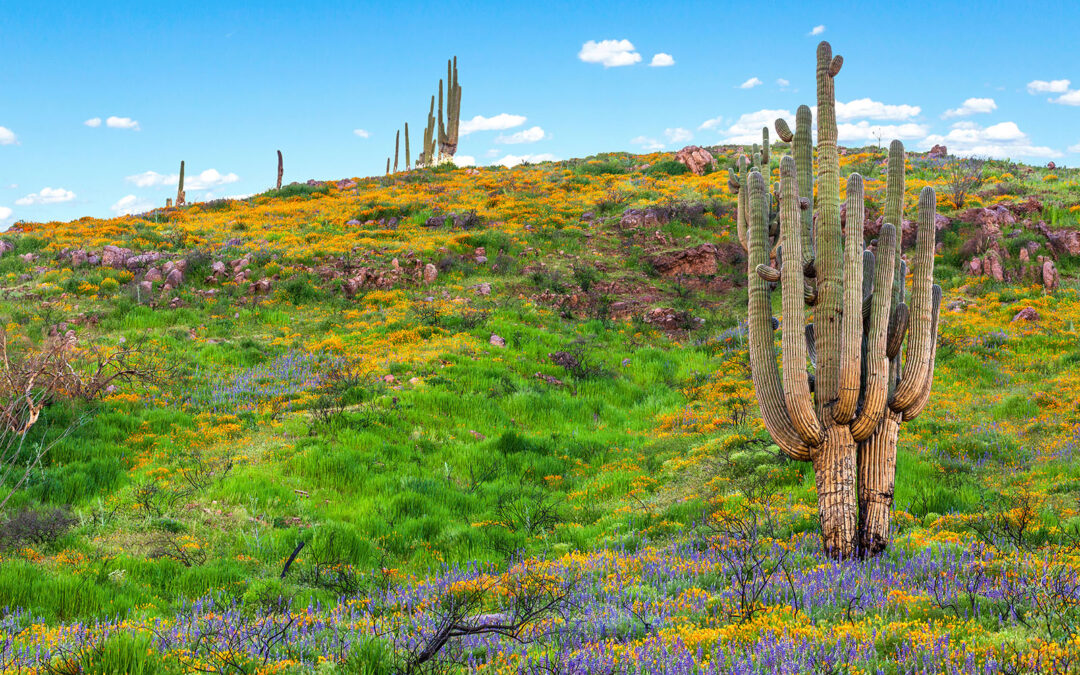In the Arizona Upland region of the Sonoran Desert, the Tonto National Forest enshrines a ruggedly beautiful landscape in central Arizona, where winter precipitation produced a “superbloom” of wildflowers this spring.
Totaling almost 3 million acres, the Tonto includes 600,000 acres of designated wilderness in seven wilderness areas — Four Peaks, Hell’s Gate, Mazatzal, Salome, Salt River Canyon, Sierra Ancha and Superstition.
These wilderness areas protect unique ecosystems populated by a diverse array of plants (saguaro cacti, barrel cacti, cholla cacti, and palo verde trees, which can perform photosynthesis in their bark) and animals (black bears, bald eagles, mountain lions, elk, ringtail cats, many snake species, scorpions, and Mexican spotted owls).
The Fossil Creek Wild and Scenic River, known for its beautiful clear waters and impressive travertine rock formations, flows through the national forest.
The region was colonized more than 1,000 years ago by the Hohokam people, who dug hundreds of miles of irrigation canals to support their farms. They abandoned the region about 600 years ago amid extreme drought, and were eventually replaced by Apache and Yavapai peoples who were relocated to reservations following a 20-year conflict with the U.S. Army.
Miners and Mormon farmers were the earliest settlers in the Tonto, followed by sheep and cattle ranchers. The Forest has a 150-year history of mining for copper, gold, silver, lead, zinc, uranium, molybdenum, manganese, asbestos, mercury and more.
At the Diamond Point crystal collection site, limestone and dolomite formations were heavily dissolved by groundwaters, creating cavities in the rock within which quartz crystals formed. Able to grow unconstrained in these cavities, many of the crystals developed beautiful classic shapes, and the quality of the quartz inspired the monicker “Herkimer diamonds.”
The Forest Service allows approximately 26,000 head of cattle to graze in the Tonto, but recent drought conditions have limited grazing to about 20% of that total. Even though the Tonto has limited timber resources, the Forest Service allows roughly 4 million board feet to be harvested each year.


